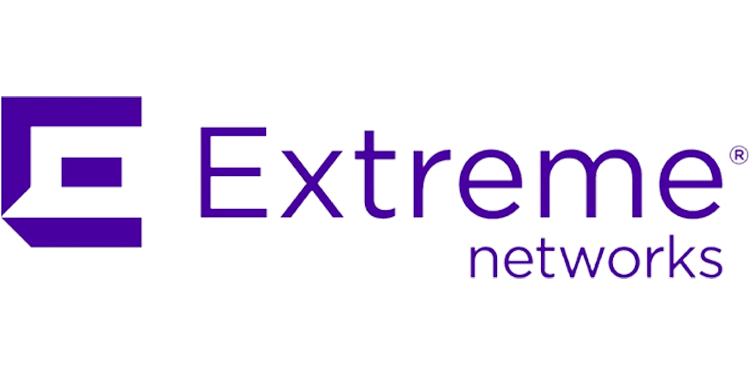Aerohive Buyers Guide
Connecting The Chain

How to assess market options to ensure the right investment for your small-medium business.
Want fast answers for your network infrastructure now?
Fill out Idency’s Aerohive WiFi form to hear from our experts.

Want to read the full version of Aerohive’s SMB WiFi Buyers Guide?
Feel free to download Aerohive’s SMB WiFi Buyers Guide PDF

Introduction
Over the past 10 years, wireless connectivity has shifted from “nice to have” to “need to have.”
The need for Wi-Fi has been pervasive across most markets
While organisations of all types and sizes have recognised the need for fast, secure, and scalable wireless connectivity, there has been a clear divide in the WLAN (wireless local area network) industry between enterprise-grade connectivity and more affordable entry-level solutions that have until now each served very specific market segments.
Many large businesses have found that deploying a robust and reliable enterprise-grade wireless infrastructure is essential for business productivity, customer response time, and employee satisfaction, among other benefits.
The small and midsize business (SMB) market has relied on vendors such as D-Link and Netgear. Although entry-level offerings provide only limited performance and feature-sets, these vendors have provided SMB organisations with low-cost solutions that have adequately served their basic connectivity requirements.

“According to Gartner, Inc., mobile devices are increasingly the go-to device for communications, productivity, and content consumption.”

“Many organisations upgrading their networks to handle the influx of mobile devices, and adding bandwidth capacity to support increasing wireless traffic demands.”

Don’t know where to start?
Have a few simple questions?
THE HISTORY OF WIRELESS DEPLOYMENTS FOR THE SMB MARKET
“Ethernet cabling had been the mainstay of business workspace connectivity since the beginning of networking. However, as smartphones, laptops, tablets and other consumer devices have multiplied, the consumer space has largely converted to a wireless-first world,”
– Ken Dulaney, vice president & distinguished analyst at Gartner.
“As bring your own device (BYOD) has increased in many organisations, the collision of the business and consumer worlds has changed workers’ demands.”
In line with this mobile shift, SMBs started to move from wired connectivity toward consumer-grade wireless networks, because of their low cost and ease of use.
Early Wi-Fi networks were often used for convenience rather than business-critical applications.
However, the importance of a robust and reliable WLAN has increased. This means that more business-critical ventures are relying on Wi-Fi networks, with many SMBs have started to investigate enterprise-class network options.
BASIC DEFINITION: CONSUMER-GRADE VS. ENTERPRISE-GRADE WIRELESS NETWORKS
What is the difference between consumer-grade and enterprise-grade wireless networks?
CONSUMER-GRADE
Consumer-grade and SoHo (Small Office Home Office) access points (APs) are often bought in single or small quantities at big-box technology retailers. The access points are configured individually, deployed, and then left to function for day-to-day activity. They typically lack a form of centralised management or monitoring.
ENTERPRISE-GRADE
Enterprise-grade access points are often purchased through value-added resellers that can assist with the initial configuration, deployment, and ongoing monitoring and maintenance, if required by the customer. Enterprise-grade wireless networks also have centralised management capabilities available to the customer.


Deploying a cloud-based management platform is ideal for SMB customers. It can lead to increased agility and lower TCO.
Additional memory and processor enhancements in the access points themselves allow for more features and higher user capacity.
Enterprise-grade Wi-Fi delivers meaningful advantages that optimise the user experience, while making it easier to manage and leverage the high traffic of typical business-based networks.
If your organisation has more than a handful of access points, and you’re using them to provide connectivity for the growing number of essential mobile devices in your workplace, then enterprise Wi-Fi is the way to go.
REQUIREMENTS FOR MODERN SMB WIRELESS DEPLOYMENTS
SMB customers often grapple with the choice between low-cost, low-feature consumer-grade access points and higher-end, higher-feature enterprise-grade APs that may have too many features.
However, due to the growing availability of high-quality WLANs in the SMB market, a few enterprise-grade Wi-Fi vendors have introduced product lines that are cost effective and contain the sophisticated features essential for high-capacity, high-reliability networks.
So what should SMBs be looking for in a wireless network?
GREAT CONNECTIVITY AND RELIABILITY
The first and most important feature that any business-critical network should support is great connectivity and reliability. Your employees need enough bandwidth to complete wireless tasks without fearing that the network may give out under heavy load.

UNDERLYING ARCHITECTURE
The underlying architecture is a major contributing factor toward the ensured success of connectivity and reliability. Leveraging the increased processing power of today’s chipsets – dual core, Cavium processors – combined with a control plane protocol (similar to OSPF and STP used in switching and outing), it has now become possible to create a fully distributed control plane.
Set of real-time infrastructure operations controls connections, disseminating connectivity information, and calculating optimal path. This can include RF management, roaming, load balancing, mesh, policy enforcement and more critical operations.
This can be achieved in 2 ways: centralised or distributed.

Distributed control plane = inherently resilient and allows the WLAN devices to self-organise and integrate directly into the access architecture, enforcing security policy before WLAN traffic ever traverses the wired LAN.
Distributed control platform = can also use load balancing and identify overcrowded access points or radios, and take action to distribute clients for optimal performance.
MULTI-CLIENT SUPPORT
Wireless is a shared medium, meaning that all clients and APs on the same channel compete for the same limited bandwidth. Each client’s throughput varies, depending on the data rate it is using (802.11 a/b/ g/n/ac) at any given point in time, and this data rate may vary multiple times per second.
RSSI values, RF interference sources, signal blockage, and other factors such as processing power and radio sophistication play into a client device’s instantaneous data rate.

ADDITIONAL FEATURES
With software configurable access points, you can instantly deploy dual 5GHz access points in high-capacity areas, then in the areas where you would otherwise disable the 2.4GHz radio, convert it to a 5GHz radio.
This maximises your investment both today and in the future, without needing to rip and replace devices. Clients connected at higher data rates, in a mixed data rate environment, achieve up to 10X more throughput than with traditional wireless LAN infrastructures – without penalising clients connected at lower data rates.


ROAMING
With more users and devices on the move, it is imperative that handoff between access points is seamless. Enterprise-grade WLAN solutions support fast roaming handoff within layer 2 and layer 3 domains. Without layer 3 roaming capabilities, the client may lose its connection. The management plane plays a key role in the deployment and support of the wireless LAN and should remain centralised.
SIMPLE CENTRALISED MANAGEMENT
Centralised cloud management is a great fit for SMB’s.
Small IT teams are searching for solutions that remove the need to become an RF guru to deploy and manage their Wi-Fi.
Centralised management consoles provide an intuitive user interface with powerful network management tools, such as streamlined configuration workflows, real-time client and event monitoring, simplified troubleshooting and versatile RF planner tools.
The ability to have a single pane of glass to configure, deploy, monitor, and troubleshoot is imperative for ease of use.
Centralised management platforms allow IT administrators to view the entire network from anywhere in the world, and to make instantaneous changes across the network or to certain sites at any time.

COST-EFFECTIVENESS
It is important for the wireless network to be cost-effective
Because SMBs often lack the budget and manpower of larger enterprises, it is important for the wireless network to be cost-effective while retaining the essential sophisticated feature set that is necessary in today’s mobile world.
Enterprise-grade WLAN options of the past were typically too complex and expensive for the SMB user, while consumer-grade options were cheaper but lacked necessary features.
However, due to the necessity of robust Wi-Fi networks across markets, many enterprise-grade vendors have released products that fall into a happy medium built specifically for SMB markets.

SCALABILITY
Consideration of scalability applies to the coverage of a deployment, increasing the load on that deployment, and easily adding features and functionality as needed. A vendor’s management platform can support 1 to thousands of access points without pricey upgrades or replacements.
The WLAN should scale predictably on both the hardware and software side. New deployments should offer consistent features and organisation as existing networks. Every device added to the network increases not only the coverage, but also the total compute capacity of the network.
Ensure to check the installation process and instructions to make sure ceiling installation is easy and straightforward.

BEYOND CONSUMER GRADE
With enterprise-grade Wi-Fi vendors now targeting SMBs with aggressively priced offerings, SMBs can benefit from more robust network offerings with simpler network operations.
The main advantage of the new offerings is simply having high-capacity, reliable connectivity that can be easily managed and supported for a fraction of previous costs.
Make sure to identify and secure a vendor that utilises the cloud and a distributed architecture to deliver scalable, simple, secure, and smarter networks that can be cost-effectively deployed.
Today’s wireless LAN offerings can give organisations tremendous power to enhance the overall business process.
The right wireless network can enable SMBs to leverage the power of mobility to increase productivity and engage employees and customers in new ways.

Don’t know where to start? We can support you.

Don’t know where to start?
Have a few simple questions?




































